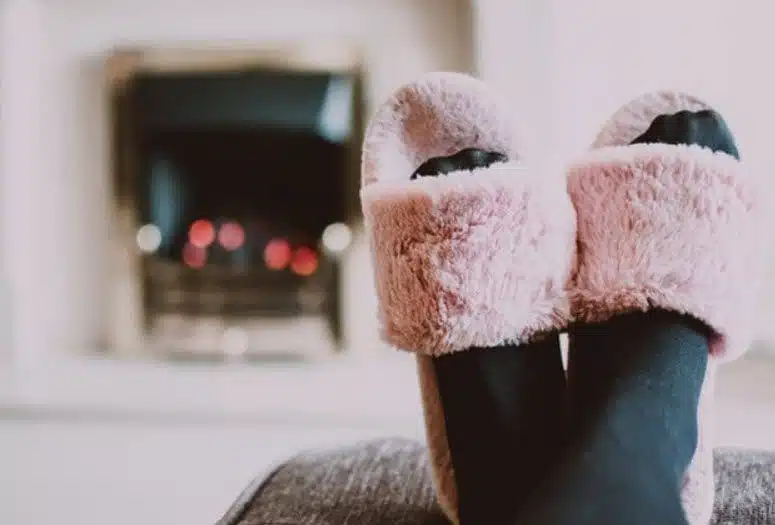Fall Prevention and Foot Health: Should Seniors Wear Shoes at Home?
Sometimes there is nothing better than getting home and kicking off your shoes after a long day. However, older adults and those at risk of falls might benefit from keeping a comfortable pair of shoes next to their favorite easy chair.

“Slippers are the traditional choice for indoor shoes, but offer little foot protection and contribute to many household falls.”
Fall Hazards and Older Feet
Falls become a greater risk as we grow older. Not only does it take longer to recover from a serious fall as we age, but our ability to avoid falls become more limited as our eyesight, coordination and sense of balance change.
Because of this increased hazard, it is important to stack the odds in your favor by choosing the right footwear to wear around the house.
Going barefoot seems like an easy solution, since you maximize contact with the ground, however this option presents serious concerns.
First, the fatty pads at the bottom of our feet become thinner as we age, meaning prolonged standing will cause uncomfortable pressure on the bones of the feet. Additionally, going barefoot increases the risk of small cuts from debris tracked into the home. These cuts can go unnoticed and lead to potentially serious infections and other complications.
Some seniors choose to wear outdoor shoes inside the home; however, this presents problems as well. Because our feet swell and grow larger over the course of the day, shoes that fit well at the start of the day might feel too snug in the evening hours, presenting the risk of pressure points or hot spots on the foot. Wearing the same shoes throughout the day also limits the amount of fresh air reaching a senior’s feet, creating a warm, dark environment where fungal infections can occur. Finally, shoe laces, Velcro straps and other shoe closures can loosen over the course of the day, and poorly-secured shoes can create almost as serious a fall hazard as wearing no shoes at all.
Other seniors opt for open backed slippers or flip-flops, however, these types of shoes actually increase fall hazards by failing to properly support the wearer’s ankle and can slip off at inopportune times. Additionally, both types of shoes tend to be made of flimsy material and offer little protection against stubbed toes and other types of impacts.
The best indoor shoe solution for fall prevention is to own a designated pair of indoor “house shoes” that meet the following criteria:
- Offer enough space to fit your feet at their largest, but also have Velcro or lace closures to provide a snug fit early in the day.
- Are made of a material that allows good airflow but enough structure to provide good support.
- Use a closed-toe design that fully encloses your foot and provides sufficient ankle support.
- Have a thick non-slip sole and a wide, low heel that provides cushion and good traction.
SelectCare Home Care Services hopes you take these recommendations into consideration the next time you shop for shoes or come home from a long day of errands. If you have recently suffered a fall or are concerned about your mobility and safety in your home, please give us a call.
SelectCare’s team of home health care experts and compassionate home caregivers have helped New York seniors overcome challenges great and small for more than 30 years.
Contact us any time, 24/7 with any questions, or to request a free in-home evaluation.